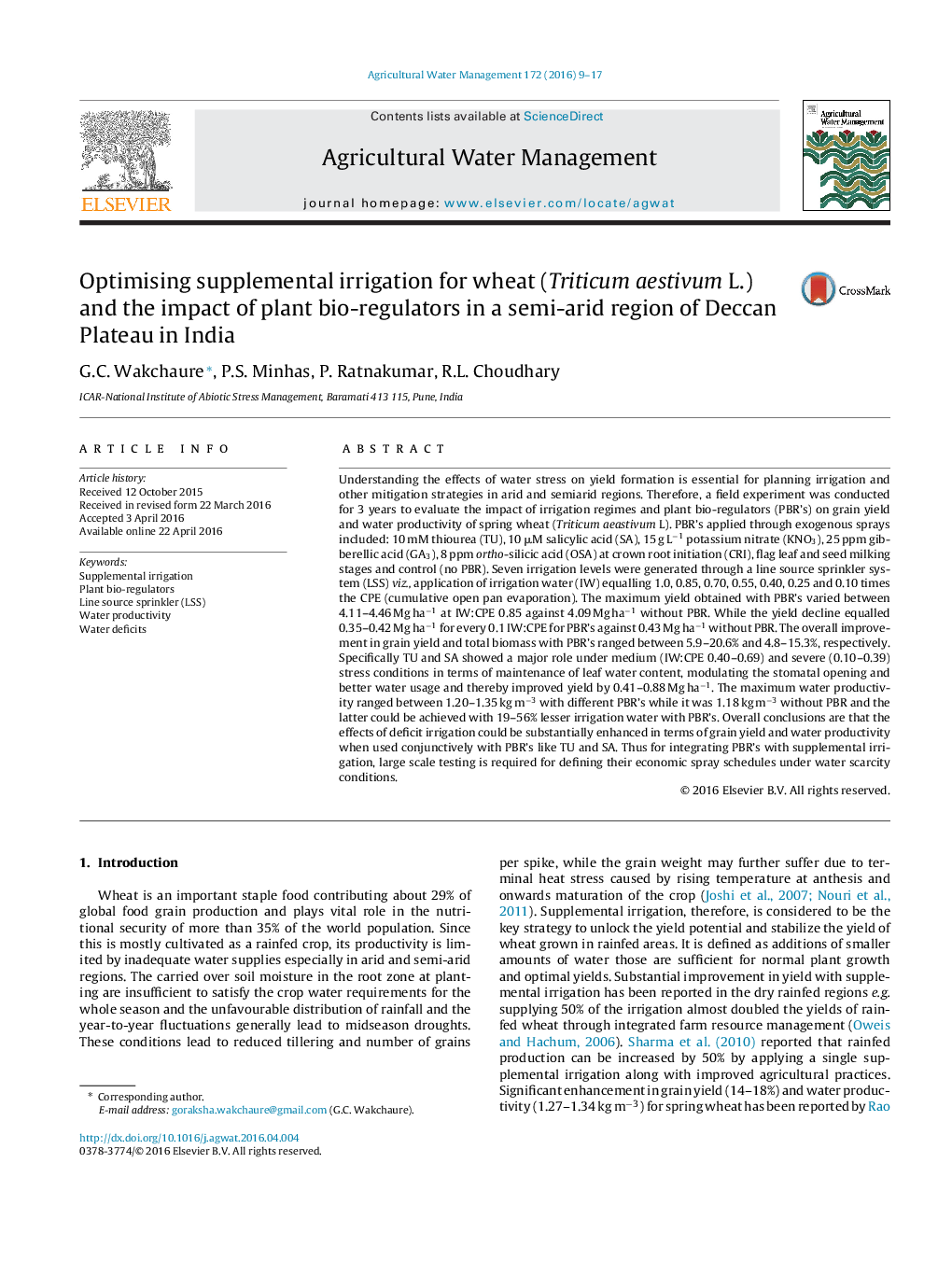| کد مقاله | کد نشریه | سال انتشار | مقاله انگلیسی | نسخه تمام متن |
|---|---|---|---|---|
| 6363505 | 1622908 | 2016 | 9 صفحه PDF | دانلود رایگان |

- Wheat responses to supplemental irrigation and plant bio-regulators(PBR's) studied.
- Application of PBR's improved 5.9-20.6% grain yield and 4.8-15.3% total biomass.
- Integrating PBR's with irrigation enhanced water productivity (1.20-1.35 kg mâ3).
- Thiourea, salicylic acid helped to mitigate water stress in water scarcity regions.
Understanding the effects of water stress on yield formation is essential for planning irrigation and other mitigation strategies in arid and semiarid regions. Therefore, a field experiment was conducted for 3 years to evaluate the impact of irrigation regimes and plant bio-regulators (PBR's) on grain yield and water productivity of spring wheat (Triticum aeastivum L). PBR's applied through exogenous sprays included: 10 mM thiourea (TU), 10 μM salicylic acid (SA), 15 g Lâ1 potassium nitrate (KNO3), 25 ppm gibberellic acid (GA3), 8 ppm ortho-silicic acid (OSA) at crown root initiation (CRI), flag leaf and seed milking stages and control (no PBR). Seven irrigation levels were generated through a line source sprinkler system (LSS) viz., application of irrigation water (IW) equalling 1.0, 0.85, 0.70, 0.55, 0.40, 0.25 and 0.10 times the CPE (cumulative open pan evaporation). The maximum yield obtained with PBR's varied between 4.11-4.46 Mg haâ1 at IW:CPE 0.85 against 4.09 Mg haâ1 without PBR. While the yield decline equalled 0.35-0.42 Mg haâ1 for every 0.1 IW:CPE for PBR's against 0.43 Mg haâ1 without PBR. The overall improvement in grain yield and total biomass with PBR's ranged between 5.9-20.6% and 4.8-15.3%, respectively. Specifically TU and SA showed a major role under medium (IW:CPE 0.40-0.69) and severe (0.10-0.39) stress conditions in terms of maintenance of leaf water content, modulating the stomatal opening and better water usage and thereby improved yield by 0.41-0.88 Mg haâ1. The maximum water productivity ranged between 1.20-1.35 kg mâ3 with different PBR's while it was 1.18 kg mâ3 without PBR and the latter could be achieved with 19-56% lesser irrigation water with PBR's. Overall conclusions are that the effects of deficit irrigation could be substantially enhanced in terms of grain yield and water productivity when used conjunctively with PBR's like TU and SA. Thus for integrating PBR's with supplemental irrigation, large scale testing is required for defining their economic spray schedules under water scarcity conditions.
Journal: Agricultural Water Management - Volume 172, 1 July 2016, Pages 9-17